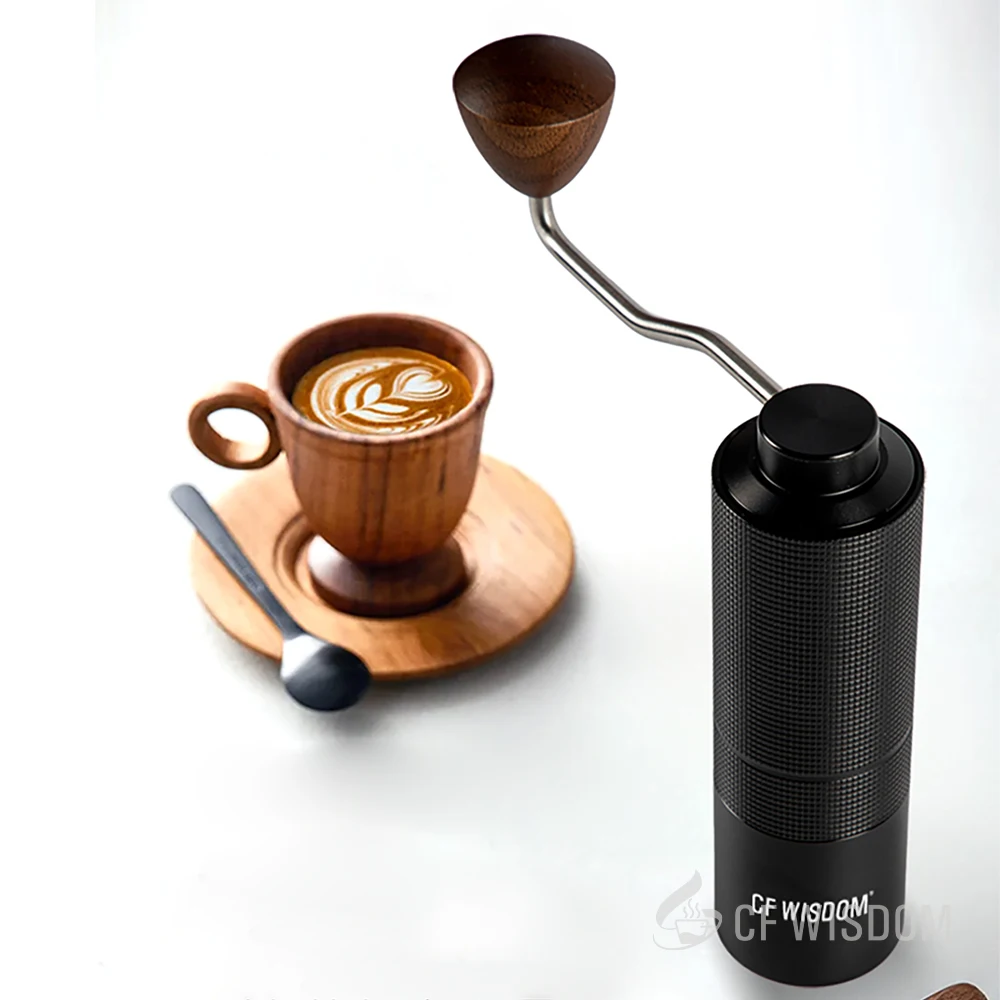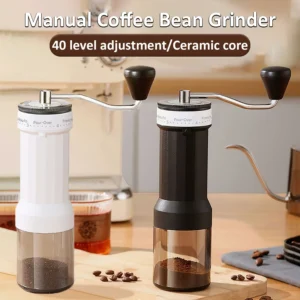Why Regular Cleaning Matters for Your Manual Coffee Grinder
Your manual coffee grinder is more than just a tool—it’s the gateway to exceptional coffee experiences. Regular cleaning isn’t just about aesthetics; it’s fundamental to preserving the quality of your daily brew. When coffee oils and residue accumulate inside your grinder, they quickly become stale and rancid, transferring these unwanted flavors to fresh beans during each subsequent use.
The impact of a neglected grinder extends beyond taste alone:
- Compromised flavor clarity – Old coffee oils mask the delicate notes in specialty beans
- Inconsistent grind size – Residue affects burr alignment and precision
- Reduced extraction quality – Uneven grounds lead to imbalanced brewing
- Shortened grinder lifespan – Built-up oils can cause premature wear on components
- Potential hygiene issues – Coffee residue can harbor mold in humid environments
Coffee oils naturally oxidize when exposed to air—a scientific process that transforms them from flavor-enhancing compounds into bitter, unpleasant substances. This oxidation accelerates when tiny particles remain trapped in your grinder’s mechanisms, directly affecting the precision grind settings for espresso and other brewing methods.
Optimal Cleaning Frequency: General Guidelines
Establishing a proper cleaning routine ensures your manual grinder performs optimally while delivering the cleanest flavors possible. Here’s a framework to guide your maintenance schedule:
Quick Clean (After Each Use)
- Brush loose grounds from the grinding chamber and collection bin
- Wipe external surfaces to remove coffee dust
- Time required: 30-60 seconds
Basic Clean (Weekly or Bi-Weekly)
- Partial disassembly to reach main components
- Thorough brushing of burrs and chambers
- Removal of visible coffee oils
- Time required: 5-10 minutes
Deep Clean (Monthly or Quarterly)
- Complete disassembly of all components
- Thorough cleaning of burrs, chambers, and adjustment mechanisms
- Removal of compacted grounds from hard-to-reach areas
- Time required: 15-30 minutes
Most manufacturers provide specific recommendations in their user manuals, which should serve as your baseline. These guidelines typically reflect the engineering considerations unique to your grinder model.
The key is finding balance—under-cleaning leads to flavor degradation and mechanical issues, while excessive cleaning with improper techniques risks damaging delicate components. For specific step-by-step instructions, our comprehensive guide to cleaning manual coffee grinders provides detailed procedures for different grinder types.
Our collection of manual coffee burr grinders includes models with varying maintenance needs depending on their design and materials.
How Your Grinding Habits Influence Cleaning Needs
Your personal coffee routine significantly impacts how frequently you should clean your grinder. Consider these key factors:
Usage Frequency
Daily users need more regular maintenance than occasional grinders. Someone who grinds beans every morning will accumulate residue faster than someone who only uses their grinder on weekends. For daily users, quick cleaning after each use and weekly basic cleaning becomes essential.
Volume Per Session
The quantity of coffee you grind matters significantly. Someone grinding 20g once daily accumulates residue more slowly than someone grinding 60g twice daily. Higher volume creates more friction, releasing more oils and generating more fine particles that adhere to components.
Bean Rotation Habits
Frequently switching between different beans introduces various oil profiles and potential flavor contamination. If you regularly alternate between beans, more frequent cleaning prevents flavor carry-over between batches.
Brewing Method Versatility
Users who adjust grind settings for espresso and then switch to coarser settings for methods like French press create unique residue patterns throughout the burr assembly. These adjustments can drive grounds into different crevices, requiring more thorough cleaning to maintain consistency.
Bean Type and Roast Level: Key Cleaning Considerations
The specific beans you choose dramatically impact your grinder’s cleaning requirements:
Dark vs. Light Roasts
Dark roasts contain significantly more surface oils that transfer to grinder components during grinding. These oils become sticky and rancid faster than the less oily residue from light roasts. If you primarily grind dark roasts, increase your cleaning frequency by about 30-50% compared to light roast users.
Single-Origin vs. Blends
Single-origin beans often have distinctive flavor profiles that can be more susceptible to contamination from old residue. When investing in premium single-origin beans, ensuring your grinder is thoroughly clean helps preserve their unique characteristics.
Flavored Coffees
Vanilla, hazelnut, or other flavored coffees leave persistent aromatic compounds that readily transfer to subsequent batches. Even trace amounts can taint unflavored beans. A deep clean is almost always necessary after grinding flavored varieties.
Our selection of hand burr grinders includes options optimized for different bean types, though all require appropriate maintenance based on what you’re grinding.
Signs Your Manual Grinder Needs Cleaning Immediately
Sometimes your grinder will tell you it needs attention before your scheduled cleaning. Watch for these unmistakable signals:
- Unexpected flavor notes – When your coffee suddenly tastes papery, cardboard-like, or unusually bitter regardless of brew method
- Visible oil buildup – Shiny, sticky residue on burrs or in the grounds chamber
- Inconsistent grind particles – Unusual amount of fine powder mixed with your desired grind size
- Grinding resistance – When turning the handle becomes noticeably more difficult
- Strange sounds – Clicking, scraping, or grinding noises that weren’t present before
- Increased static and retention – More grounds clinging to surfaces or staying trapped in the grinder
- Diminished aroma – Reduced freshness in the smell of your ground coffee
These signs indicate that immediate cleaning is necessary, regardless of when you last performed maintenance.
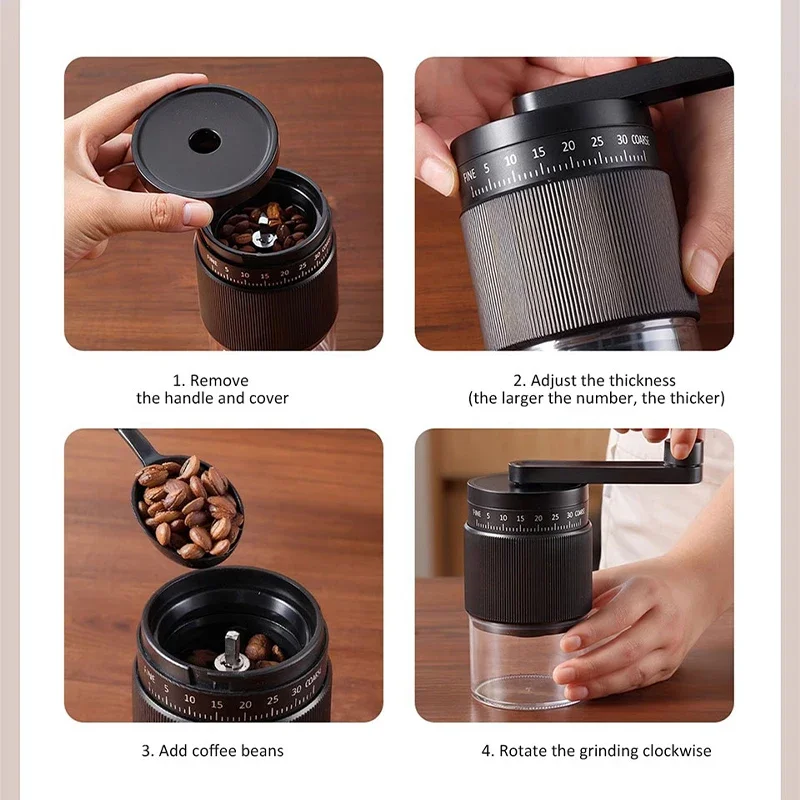
Quick Cleaning: The Daily Routine
Implementing a quick cleaning routine after each use prevents the majority of long-term buildup issues while requiring minimal time investment. This 1-2 minute process serves as the foundation of proper grinder maintenance:
Start by inverting your grinder and gently tapping it to dislodge loose grounds. Use a small cleaning brush (many grinders include one) to sweep away remaining particles from the grounds chamber. A photographer’s air blower can help remove grounds from less accessible areas without disassembly.
Pay special attention to the hopper where beans are loaded, the grounds collection chamber, and any accessible portions of the burrs. This quick routine removes the majority of loose grounds but doesn’t address oils or compacted residue in tight spaces.
Making this a habitual part of your coffee workflow prevents the initial accumulation that leads to more difficult cleaning later. While it doesn’t replace deeper cleaning sessions, it significantly extends the time between them and maintains daily flavor quality.
For a more comprehensive approach to maintenance beyond daily cleaning, our guide to deep cleaning hand coffee grinders provides detailed procedures for thorough maintenance.
Basic Cleaning: Your Weekly Maintenance Plan
A weekly basic cleaning addresses accumulated oils and grounds that quick daily cleaning can’t reach. This 5-10 minute procedure strikes the perfect balance between thoroughness and convenience:
Begin by referencing your grinder’s manual for basic disassembly instructions. Most manual grinders allow you to separate the grinding chamber, adjustment mechanism, and collection bin without specialized tools. Remove the burr carrier if your model permits easy access.
Use a combination of a dry brush, microfiber cloth, and wooden toothpicks for reaching crevices. Focus on areas where coffee oils accumulate: burr edges, threading on adjustment mechanisms, and the grounds chute.
This level of cleaning is sufficient for most regular users who perform daily quick cleaning. You’ll know it’s enough when your grinder maintains consistent performance and produces coffee without off-flavors.
Manual burr coffee grinder cleaning techniques vary slightly between models, but these fundamental approaches work for most designs.
Deep Cleaning: The Complete Refresh Process
When quick and basic cleaning no longer restore optimal performance, it’s time for deep cleaning. This 15-30 minute process provides a complete refresh:
Deep cleaning becomes necessary when you notice persistent off-flavors, inconsistent grinding performance, or visible buildup that basic cleaning doesn’t remove. For most users, scheduling this monthly or quarterly is appropriate, depending on usage frequency.
The process involves complete disassembly of all components according to manufacturer instructions. You’ll need small brushes, microfiber cloths, wooden toothpicks, and possibly specialized grinder cleaning tablets like Urnex Grindz.
This thorough cleaning addresses issues that quick and basic cleaning can’t solve, including compacted coffee grounds in threading, oil buildup in hard-to-reach areas, and residue affecting adjustment mechanisms.
Rather than providing specific steps that might vary between models, always follow manufacturer guidelines for complete disassembly and cleaning methods, especially for models from our ceramic burr coffee grinder collection, which require special care.
Hand Burr Grinder, Hand Crank Coffee Grinder, Manual Espresso Grinder, Portable Coffee Grinder
Price range: $262.72 through $300.22 Select options This product has multiple variants. The options may be chosen on the product pageManual Burr Mill, Manual Coffee Grinder Stainless Steel, Manual Coffee Mill Grinder, Mechanical Coffee Grinder
Price range: $127.26 through $130.32 Select options This product has multiple variants. The options may be chosen on the product pageHand Burr Grinder, Manual Coffee Grinder Stainless Steel, Precision Manual Grinder
Price range: $183.64 through $187.52 Select options This product has multiple variants. The options may be chosen on the product pageCeramic Burr Coffee Grinder, Hand Burr Grinder, Hand Crank Coffee Grinder, Manual Coffee Bean Grinder
Price range: $59.17 through $59.96 Select options This product has multiple variants. The options may be chosen on the product page
Cleaning Needs for Different Grinder Materials
Different materials require specific cleaning approaches to maintain performance without causing damage:
| Material Type | Cleaning Considerations | Special Notes |
|---|---|---|
| Stainless Steel Burrs | Resistant to moisture, can use slightly damp cloth if dried immediately | Avoid abrasive cleaners that can dull cutting edges |
| Ceramic Burrs | More brittle than steel, requires gentle cleaning | Susceptible to chipping if cleaned aggressively |
| Plastic Components | Can stain from coffee oils | May benefit from occasional diluted soap cleaning |
| Metal Body Components | Watch for corrosion in threaded areas | Keep threads clean and occasionally dry-lubricated |
| Glass Components | Can develop coffee oil film | Periodically clean with mild detergent |
| Wooden Elements | Absorb oils over time, affecting appearance | Never soak; wipe clean and occasionally condition |
Our premium stainless steel manual coffee grinders offer excellent durability but still benefit from material-appropriate cleaning techniques to maintain their performance and appearance.
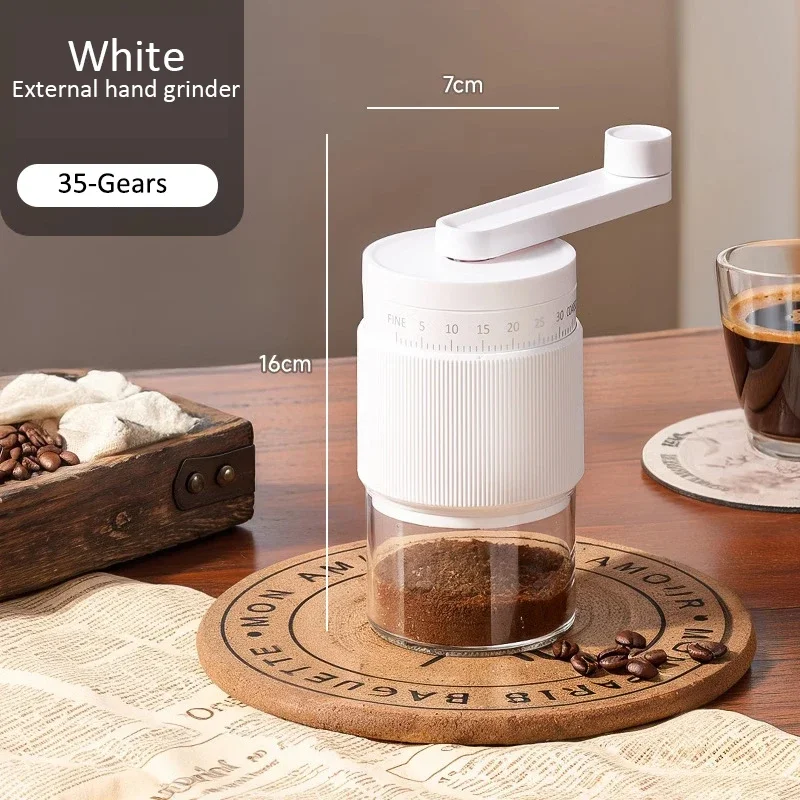
Common Cleaning Mistakes That Damage Your Grinder
Avoid these potentially costly cleaning errors:
- Submerging non-washable components – Water can cause rust in steel parts not designed for washing and damage bearing assemblies
- Aggressive scrubbing of burr edges – Can dull the cutting surfaces, leading to less precise grinding
- Using rice to clean grinders – This controversial method can damage bearings and burrs with excessive hardness
- Reassembling while components are still damp – Can lead to rust formation and swelling in wooden parts
- Applying household cleaners or soaps – Leaves residues that affect coffee flavor and may damage materials
- Using compressed air at high pressure – Can force particles deeper into mechanisms or damage delicate parts
These mistakes can significantly impact your ability to maintain perfect espresso grind settings and overall grinder performance. Taking a gentler, more methodical approach to cleaning preserves your grinder’s functionality.
How Grind Size Settings Affect Cleaning Requirements
Your typical grind setting directly influences both where residue accumulates and how quickly cleaning becomes necessary:
Fine espresso grinds create more “coffee dust” that works its way into small crevices and threading. This fine powder compacts more densely and can cement itself into mechanisms when combined with oils. Users grinding primarily for espresso may need to clean 30-40% more frequently than those using medium or coarse settings.
Coarser grinds for French press or cold brew create fewer fines and tend to be easier to brush away during quick cleaning. However, they can still leave oils that accumulate over time.
If you frequently adjust between different grind sizes, particles can become trapped in the adjustment mechanism. This frequent changing requires special attention to the threading and calibration components during cleaning.
For those using our specialized manual coffee grinders for espresso, maintaining cleanliness is particularly critical for achieving the precision and consistency required.
Special Situations: When to Break Your Regular Schedule
Certain circumstances warrant immediate cleaning, regardless of your regular maintenance schedule:
- Before extended storage – Clean thoroughly if you won’t use your grinder for several weeks or more
- After grinding flavored or heavily oiled beans – Prevent flavor contamination in future batches
- Before using specialty or expensive beans – Ensure the cleanest possible flavor profile for premium coffees
- Following unusual performance – Address grinding inconsistencies or unexpected resistance immediately
- Prior to gifting or selling – Present your grinder in optimal condition
For example, after using a seasonal flavored holiday blend, perform a deep clean before switching to an expensive single-origin Ethiopian bean to avoid flavor contamination that would mask its subtle notes.
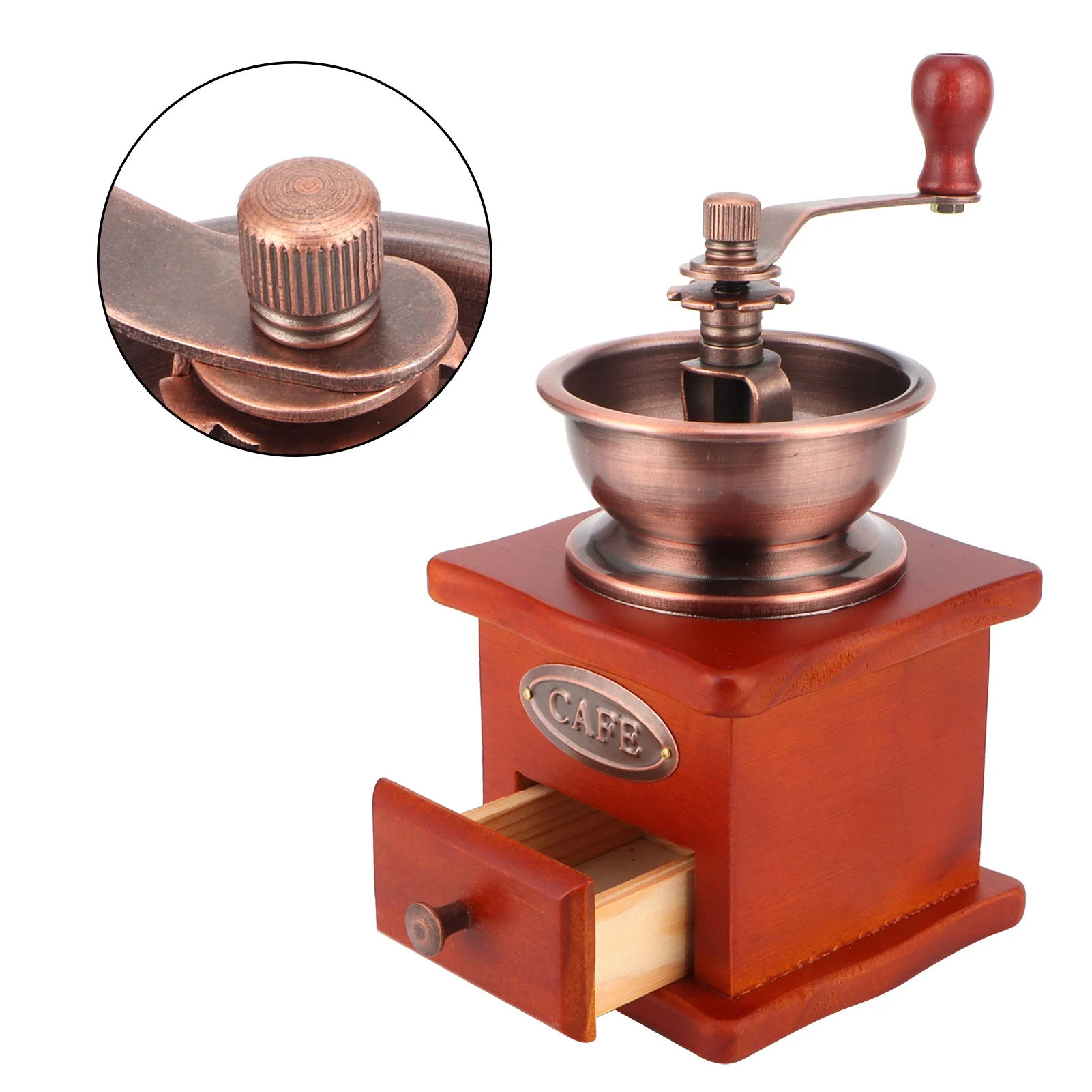
Does Climate Affect Your Grinder’s Cleaning Needs?
Environmental conditions significantly influence how quickly your grinder requires cleaning:
How does humidity impact my grinder?
High humidity environments cause coffee grounds to absorb moisture, becoming stickier and more likely to adhere to internal components. This can accelerate the breakdown of coffee oils into rancid compounds. In humid climates, increase cleaning frequency by approximately 25%.
Does temperature matter?
Warmer temperatures accelerate the oxidation process of coffee oils, causing them to become rancid more quickly. Grinders kept in warm kitchens near ovens or in direct sunlight may require more frequent cleaning.
Should cleaning frequency change seasonally?
Consider adjusting your cleaning schedule seasonally, particularly if you live in an area with significant climate variations. Summer months typically require more frequent maintenance than winter months.
Where should I store my grinder?
Store your grinder in a cool, dry location away from direct heat sources and humidity to minimize environmental impacts between cleanings.
The Rewards of a Consistent Cleaning Routine
Maintaining a regular cleaning schedule delivers tangible benefits that enhance your overall coffee experience:
A properly cleaned grinder can reveal flavor notes that would otherwise be masked by stale oils and residue. Many coffee enthusiasts report distinguishing subtle fruit, floral, or chocolate notes that were previously imperceptible after implementing regular cleaning routines.
Well-maintained grinders typically last years longer than neglected ones. The investment in a quality manual grinder—often ranging from $100-300—is protected through proper care, potentially doubling its functional lifespan.
Each brewing method relies on consistent extraction, which begins with uniform particle size. Clean burrs produce more consistent grounds, resulting in more balanced, predictable brewing outcomes cup after cup.
There’s also an undeniable satisfaction in maintaining quality equipment. The ritual of caring for your coffee tools becomes an extension of the brewing experience itself—a moment of mindfulness in your coffee journey.
Establishing Your Personal Cleaning Calendar
Creating a personalized maintenance schedule ensures your grinder remains in optimal condition while minimizing unnecessary work:
Begin by assessing your usage patterns—how often you grind, what types of beans you use, and your typical grind settings. Layer in environmental factors like your local climate and storage conditions.
For tracking, consider adding grinder cleaning to your digital calendar with recurring reminders, or create a simple physical maintenance log stored near your coffee equipment.
Integrate cleaning into existing coffee rituals—perhaps performing quick cleaning daily after your morning brew and scheduling deeper cleaning for weekend mornings when you have more time available.
Keep essential cleaning tools organized and accessible: a dedicated brush, microfiber cloth, wooden toothpicks, and optionally, grinder cleaning tablets. Having these items readily available removes barriers to regular maintenance.
Remember to periodically reassess your cleaning schedule based on your grinder’s performance and adjust as needed.
Summary: Finding Your Grinder’s Sweet Spot
Proper maintenance of your manual coffee grinder balances art and science—understanding the mechanics while tuning into the subtle cues your equipment provides.
For most coffee enthusiasts, a tiered approach works best: quick cleaning after each use, basic cleaning weekly, and deep cleaning monthly or quarterly depending on use patterns. These intervals should be personalized based on your specific beans, usage frequency, and environmental conditions.
Pay attention to warning signs like unusual flavors, inconsistent grinds, or increased resistance—they’re your grinder’s way of requesting immediate attention.
Remember that proper maintenance isn’t just about preserving equipment—it’s about respecting the coffee itself. The extra minutes invested in cleaning translate directly to better flavor in your cup, making every sip more rewarding.

